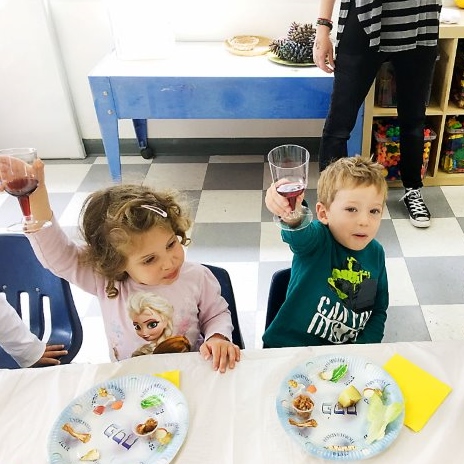
News

The mystery and meaning of the four children
TALI FEINBERG
Child and adolescent psychologist Havi Wolfson Hall agrees, and explains the aversion: “There has always been a part of the Seder that troubled me, and that is the four children (sons). The story is that four children were at the first Passover Seder; one was wise, one was wicked, one was simple, and there was one who did not know how to ask a question.
“As a child, I remember never wanting to be called upon to read this section of the Haggadah unless I was reading the wise child’s words because the others sounded so cruel to me.”
Wolfson Hall proposes that youngsters are made to feel secure in reading these roles, and even that the four children could be “one child at the various stages of development on their journey to adulthood”.
For example, ‘the child who does not know how to ask’ is a toddler or baby. “Through their senses of taste, sight, hearing and smell, they’re learning to make sense of their environment. Let the child taste the salt water and feel the roughness of the matza. Use musical instruments and let them shake a maraca to the beat, and fill the Seder with songs and celebration,” proposes Wolfson Hall.
The ‘simple child’ could be the one in pre-school or primary school, “who might be learning about the story of Passover. He is curious but perhaps overwhelmed by the commotion and unable to participate by asking his own questions quite yet. To engage him, ask what he knows about the holiday, or give him a job like helping to set the table or pass out and collect the Haggadot to help him feel like he is participating – even if he is too shy to contribute verbally.”
Third comes the ‘wicked child’, better known as the pre-teen or adolescent. “It is this child’s job to question why he or she is forced to participate in these traditions, and to resist against conforming and doing what everyone else is doing. Let the child question and support their self-searching. Encourage them in these rich and ancient traditions because they are special and will play a large part in the child’s identity and will strongly influence their unique Jewish journey,” says the psychologist.
Finally, there’s the ‘wise child’ – the young adult who has gone through adolescence and has come out on the other side. “Ask him or her about their freedom. Invite the child to lead part of the Seder in order to prepare them for the day when they will sit at the head of the table with their family,” she says.
US-based child and adolescent psychiatrist Mark Banschick agrees that while the ‘wicked child’ may seem upsetting, he plays a crucial part in the dynamic of faith and spirituality. “The path from the Tam to the Chacham – from a simple to a more mature faith – passes through the Rasha. The Rasha is a form of differentiation. He is the son who differentiates from the path of sincere faith by saying: ‘I’m not part of this – I require myself to assess whether this is for me or not.’
“Differentiation is a well-known process in human development, common in teens, but important for adults as well. It’s the edge that helps us to mature. In spiritual development, differentiation is critical to a faith embraced freely – and not just by habit or necessity.
“Take a look at yourself. Note that as you engage your own faith, there are times that you’re the simple son. Then you are touched by the Rasha, followed by periods as a Chacham, only to fall off into the son who forgets to ask, or doesn’t even think it’s important, only to find spirituality again. You can be observant and just be going through the motions, or feel close to your source. Faith is fluid and all of us move on this spectrum.”
Finally, is there a fifth child? The late Holocaust survivor and Nobel laureate Elie Wiesel thought so: “He is the child killed in the Holocaust – he represents a lost Jewish generation, conspicuous by his absence.”
“The late Lubavitcher Rebbe suggested that there is a fifth child on Pesach,” writes Emeritus Chief Rabbi Jonathan Sacks. “The fifth child is the one who is not there, the child lost through outmarriage and assimilation.
“Rabbinic tradition tells us that in Egypt, many Jews assimilated and did not want to leave, and they perished in the plague of darkness. The plague was less an affliction of the Egyptians than a way of covering the shame of the Israelites, that so many did not want to leave. The loss of Jews through assimilation has been an ongoing tragedy of Jewish history. How do we allude to it on Seder night? By silence: the fifth child, who is not there.”




